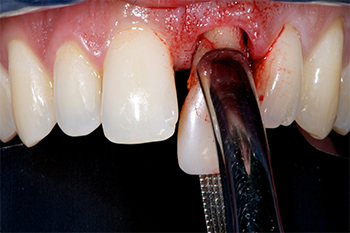
A simple extraction is the removal of a tooth that is visible in your mouth. During a simple extraction, your dentist will numb the tooth and gum tissue and loosen the tooth with an instrument called an elevator before removing it with dental forceps.
A Tooth extraction, put simply, is the removal of a tooth from the mouth. Dental extractions are most often performed because a tooth has sustained damage or decay, or cannot be saved by Root Canal treatment, or to prepare for the placement of a Dental Implant. Advanced gum disease may be another contributing factor in a tooth extraction.
Other reasons for a tooth extraction include making space in the mouth for braces or other orthodontic treatment, or in the case of pediatric patients, to allow room for adult teeth to grow.
Regular Tooth Extraction: A tooth that has fully erupted through the gum line can usually be removed as easily as any other tooth via a regular extraction.
Surgical Tooth Extraction and Oral Surgery: A wisdom tooth or other tooth that is impacted or is still under the gumline or embedded in the jaw bone may require a surgical extraction, which is a form of oral surgery. A surgical extraction means your dentist will make an incision along your gum line to expose the tooth, and remove any bone that is still covering the tooth to allow it to be removed. Your dental insurance may cover all or a portion of surgical tooth extractions.
Your dentist may recommend extracting one tooth at a time, or focus on one area of your mouth at a time. Before the dentist removes the tooth, he or she will numb the surrounding tissue with a local anesthetic.
If you or a loved one have experienced dental anxiety in the past, your dentist may utilize Nitrous Oxide, known as laughing gas during the procedure, or may have prescribed an oral sedative to help you relax.
Once the area has been numbed, the dentist will remove the tooth, control any bleeding, and if necessary, may use sutures (stitches) to close the gums. Your dentist may prescribe or recommend over the counter medications to help control any post-procedure pain or swelling.
Choose color style